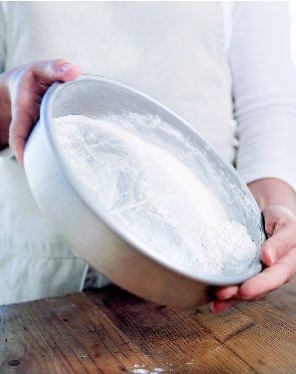
Given that most of us have been in quarantine for the past two months (depending on where you live), I think we’ve all tried to hone some of our lesser-developed hobbies, or maybe even explore some new ones. For a lot of people, that includes baking and cooking. And let’s be real, baking is way more fun. At least, in my opinion. I personally love to bake. I’m not spectacular at it… but it’s definitely something I’ve improved on over time.
Today, I’m going to be sharing some of my baking tips and tricks to help make your sweet treats reach their full potential. Some of these are quite obvious, but… if you’ve never baked before, you have to learn somewhere, right?

Clumpy Butter Frosting
This trick applies to batter as well, but it’s particularly important if you’re making frosting. Especially if you’re the kind of person who refrigerates your butter. I know I am. If your butter isn’t soft before you add it to your frosting, it will form very tiny, unappetizing clumps when you try to mix everything together. Even if you use an electric mixer.
Personally, I microwave my butter for 20 to 30 seconds before I put it in my mixer, and I always add it as the first ingredient. That way, you can make sure it’s completely smooth (I like to scrape down the bowl a few times), before adding your other ingredients.

Drippy Frosting
If you follow your recipe correctly (especially if it gets good reviews and is from a respectable source), your frosting should have a good consistency. But if you frost your cake, cupcakes, or cookies too early, well… that won’t be the case for long. I would recommend waiting an hour or two after you take your baked goods out of the oven to frost them.
If you frost too early, the heat from your cake (or other delicious treat), will cause the frosting to melt. To make sure you aren’t frosting too early, hold your hand an inch above whatever you just baked. If you feel heat, it’s too early to frost. If not, go ahead!

The Best Way to Grease a Pan
If you’re making something in a pan, it’s a good idea to grease it beforehand. Otherwise, your treat will stick to the metal and refuse to come out. A lot of people use cooking sprays to grease their pans, but there’s a better solution, even if it’s a bit more time consuming.
Start by melting some butter in the microwave. Once it’s soft, spread it around the pan so that it covers every surface. Then, pour some flour into the pan (you don’t need a lot). Tilt the pan until the flour has coated every surface. Once you’re done, I think it’s a good idea to pat the pan above a sink or trash can so that the excess flour isn’t present. Boom! You’re done.

Raw Flour
This next trick isn’t really a trick, it’s just some advice. Kind of. A big misconception among people is that raw eggs are the only reason why it’s bad to eat cookie dough, given that you could get salmonella. Actually, flour isn’t safe to eat raw either. Flour is made from a harvested grain that isn’t treated to kill bacteria, according to a google search I did five seconds ago.
Now, personally, I always eat the raw cookie dough regardless of what ingredients it has… even though that isn’t the greatest idea. But if you find a “safe” cookie dough recipe that you’re planning on sharing with friends, check to make sure that it doesn’t have flour before making it.

Smaller Ingredients
This mistake is pretty common, but easily fixable. If you’re adding a small measure of an ingredient to a mixture (e.g. baking soda, baking powder, cinnamon, or any spice), DO NOT dump it into the bowl all at once.
Smaller ingredients like these tend to have a strong flavor (spices), or a powerful effect on the mixture (baking soda and baking powder), and need to be dispersed evenly. You can tap your measuring spoon with your finger around the bowl so that you can easily spread the ingredient around.

Filling the Pan
This is one of the most obvious tips. If you’re using a pan (any pan!) to bake your sweet treat(s), only fill it about ⅔ of the way to the top. It’s going to rise while it spends time in the oven, and if you fill it all the way up, you’re going to have an overflow. This is especially true if you add baking soda and/or baking powder (which almost every recipe calls for), which causes baked goods to rise.

The Clean Fork Method
This is another kind of obvious one. If you’re baking anything in a pan (so not cookies!), and are wondering if your treat is done, stick a fork (gently) in the center. If you take it out and the batter is stuck to the fork, you should cook it a little longer. If the fork comes out clean, you’re all set! You can do this with a toothpick as well, but I think that it’s much easier to tell with a fork.
In terms of cookies, there’s no perfect way to see if they’ve cooked a sufficient amount. Since cookies don’t usually bake for more than 15 minutes, you might not have this problem. If they still seem pretty gooey when you take them out of the oven, I would put them in for another minute or two. But you have to remember that they’ll harden a little after sitting out in a room temperature area.
That’s all! Hope you enjoyed 🙂